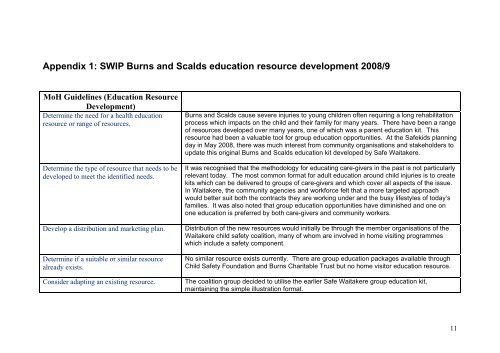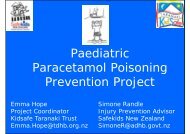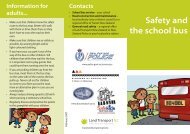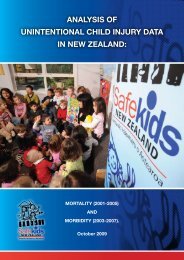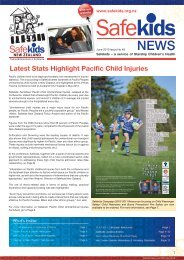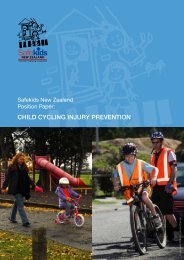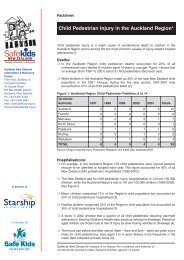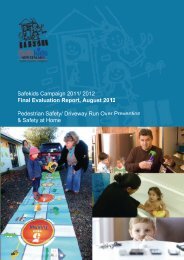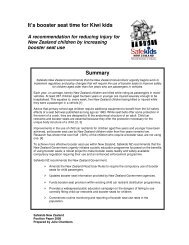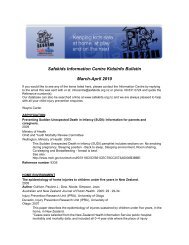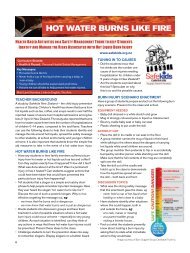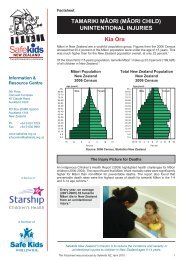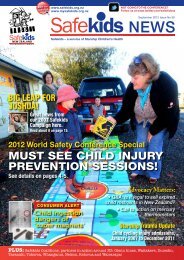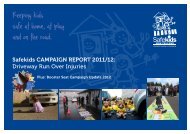Safekids Campaign 2010/11: Fire Safety/ Burns Prevention Contents
Safekids Campaign 2010/11: Fire Safety/ Burns Prevention Contents
Safekids Campaign 2010/11: Fire Safety/ Burns Prevention Contents
You also want an ePaper? Increase the reach of your titles
YUMPU automatically turns print PDFs into web optimized ePapers that Google loves.
Appendix 1: SWIP <strong>Burns</strong> and Scalds education resource development 2008/9<br />
MoH Guidelines (Education Resource<br />
Development)<br />
Determine the need for a health education<br />
resource or range of resources.<br />
Determine the type of resource that needs to be<br />
developed to meet the identified needs.<br />
Develop a distribution and marketing plan.<br />
Determine if a suitable or similar resource<br />
already exists.<br />
Consider adapting an existing resource.<br />
<strong>Burns</strong> and Scalds cause severe injuries to young children often requiring a long rehabilitation<br />
process which impacts on the child and their family for many years. There have been a range<br />
of resources developed over many years, one of which was a parent education kit. This<br />
resource had been a valuable tool for group education opportunities. At the <strong>Safekids</strong> planning<br />
day in May 2008, there was much interest from community organisations and stakeholders to<br />
update this original <strong>Burns</strong> and Scalds education kit developed by Safe Waitakere.<br />
It was recognised that the methodology for educating care-givers in the past is not particularly<br />
relevant today. The most common format for adult education around child injuries is to create<br />
kits which can be delivered to groups of care-givers and which cover all aspects of the issue.<br />
In Waitakere, the community agencies and workforce felt that a more targeted approach<br />
would better suit both the contracts they are working under and the busy lifestyles of today’s<br />
families. It was also noted that group education opportunities have diminished and one on<br />
one education is preferred by both care-givers and community workers.<br />
Distribution of the new resources would initially be through the member organisations of the<br />
Waitakere child safety coalition, many of whom are involved in home visiting programmes<br />
which include a safety component.<br />
No similar resource exists currently. There are group education packages available through<br />
Child <strong>Safety</strong> Foundation and <strong>Burns</strong> Charitable Trust but no home visitor education resource.<br />
The coalition group decided to utilise the earlier Safe Waitakere group education kit,<br />
maintaining the simple illustration format.<br />
<strong>11</strong>


